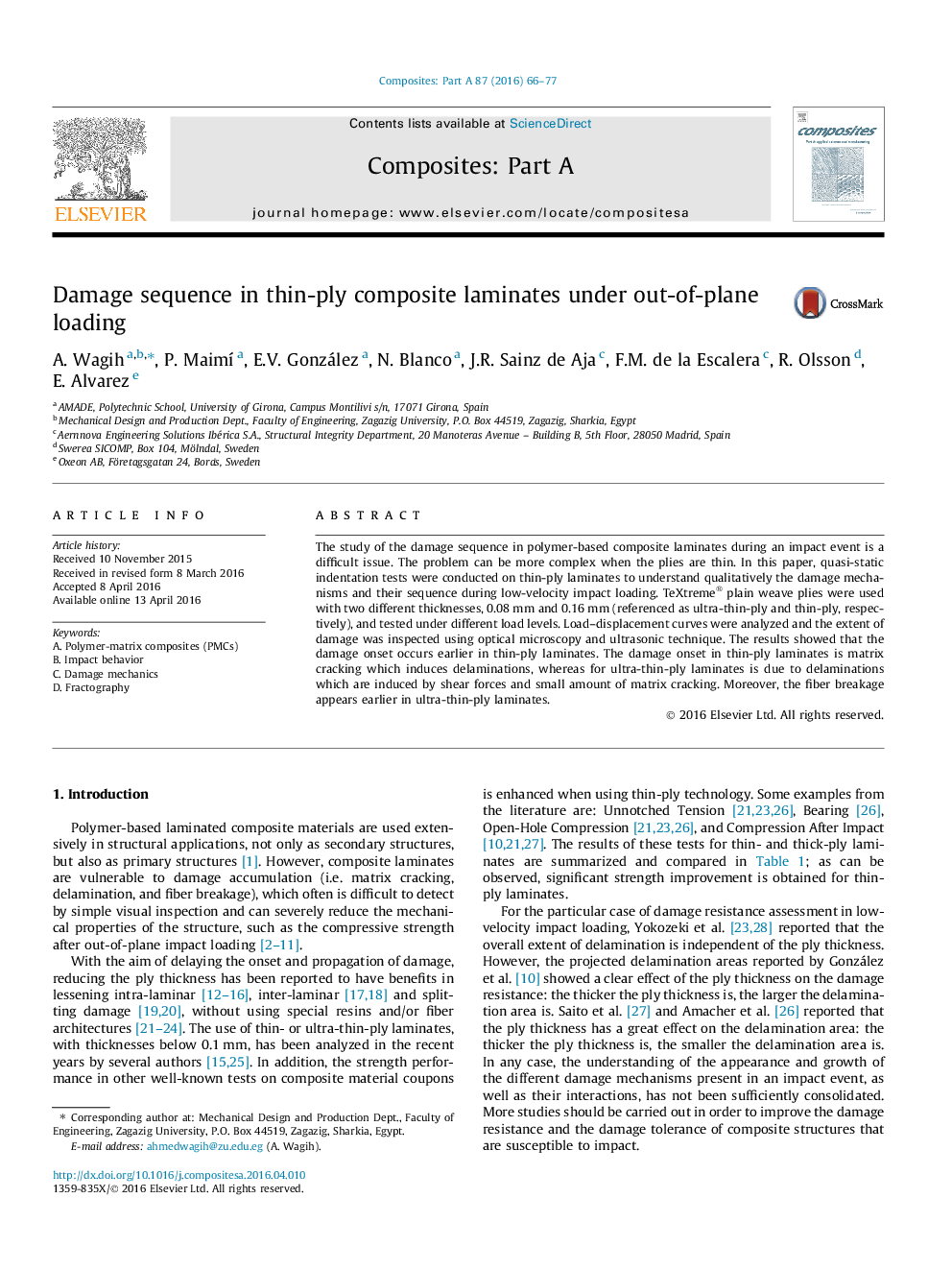| Article ID | Journal | Published Year | Pages | File Type |
|---|---|---|---|---|
| 7890681 | Composites Part A: Applied Science and Manufacturing | 2016 | 12 Pages |
Abstract
The study of the damage sequence in polymer-based composite laminates during an impact event is a difficult issue. The problem can be more complex when the plies are thin. In this paper, quasi-static indentation tests were conducted on thin-ply laminates to understand qualitatively the damage mechanisms and their sequence during low-velocity impact loading. TeXtreme® plain weave plies were used with two different thicknesses, 0.08Â mm and 0.16Â mm (referenced as ultra-thin-ply and thin-ply, respectively), and tested under different load levels. Load-displacement curves were analyzed and the extent of damage was inspected using optical microscopy and ultrasonic technique. The results showed that the damage onset occurs earlier in thin-ply laminates. The damage onset in thin-ply laminates is matrix cracking which induces delaminations, whereas for ultra-thin-ply laminates is due to delaminations which are induced by shear forces and small amount of matrix cracking. Moreover, the fiber breakage appears earlier in ultra-thin-ply laminates.
Related Topics
Physical Sciences and Engineering
Materials Science
Ceramics and Composites
Authors
A. Wagih, P. MaimÃ, E.V. González, N. Blanco, J.R. Sainz de Aja, F.M. de la Escalera, R. Olsson, E. Alvarez,
